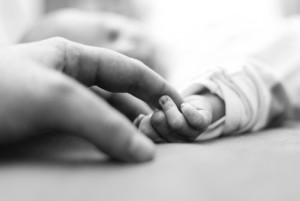Genetic Mutation May Cause Cerebral Palsy, Research Finds
 For years, the medical community has grappled with understanding the many causes of cerebral palsy – a neuro-developmental condition that affects muscle control, coordination and – in more severe types –mental development. Today, most physicians concede that cerebral palsy typically results from a series of events that cause or exacerbate injury to the developing fetal brain. One of the most common held beliefs is that birth asphyxia – or oxygen deprivation to the baby before or during childbirth – is one of the primary causes of this brain trauma. Now, a team of researchers at Australia’s Adelaide University has found another possible culprit – genetic mutation.
For years, the medical community has grappled with understanding the many causes of cerebral palsy – a neuro-developmental condition that affects muscle control, coordination and – in more severe types –mental development. Today, most physicians concede that cerebral palsy typically results from a series of events that cause or exacerbate injury to the developing fetal brain. One of the most common held beliefs is that birth asphyxia – or oxygen deprivation to the baby before or during childbirth – is one of the primary causes of this brain trauma. Now, a team of researchers at Australia’s Adelaide University has found another possible culprit – genetic mutation.
“We have made a major inroad into the understanding … of cerebral palsy which was considered for many years a result of brain injury. Now we’re saying that at least a good proportion, 14 per cent or more, is genetic, “said Professor Josef Gecz, who participated in the international study.
Genetic mutation linked to cerebral palsy diagnoses
University of Adelaide researcher Alastair MacLennan said the study was born out of doubts by scientists that cerebral palsy is a direct result of brain damage at birth. The DNA of 183 people with cerebral palsy was mapped by the researchers, who determined that genetic mutations were the probable cause of the disorder in some 14 percent of cases.
The Australian researchers hope that this recent discovery will pave inroads to earlier diagnosis of cerebral palsy, in addition to better management and care.
Types of cerebral palsy
In the United States, statistics show that every two to three children out of 1,000 are born with cerebral palsy, which impacts not only motor skills and reflexes, but can also impair speech, vision, hearing and cognitive development. Spastic CP is the most common, accounting for up to 76 percent of all cerebral palsy cases. This type of cerebral palsy affects the muscles of the limbs, making them appear stiff and tight, with jerky movements.
In the event that a child’s cerebral palsy is in fact caused by brain damage, the four types that are linked to the condition include:
- Hypoxic-ischemic encephalopathy (HIE) – caused by lack of oxygen to the brain
- Intraventrical Hemorrhage – an arterial or venous brain bleed
- Cerebral Dysgenesis- Abnormal brain development
- Periventricular Leukomalacia (PVL) – Trauma to the brain’s white matter
While some individuals with CP may have difficulty walking or with fine motor skills, they go on to lead very healthy, normal lives. Others find everyday life to be a monumental struggle, and have problems dressing themselves, bathing and even eating.
Diagnostic tools used to evaluate the type and severity of cerebral palsy include physical exams, EEG tests, MRI and CAT scans, intelligence tests, as well as hearing and vision exams.
Future outlook
While recent research on the causes of cerebral palsy is encouraging, and may help facilitate earlier diagnosis, it may be too soon to tell if DNA mapping can help prevent future cases. At present, good prenatal care is paramount, is this may reduce chance of premature delivery, which is linked to a higher incidence of cerebral palsy in infants.
- ABCnet.au.com, Cerebral palsy research by Adelaide University finds genetic mutation link http://www.abc.net.au/news/2015-02-12/cerebral-palsy-research-finds-genetic-mutation-link/6089016
- Mayo Clinic, Cerebral Palsy Causes http://www.mayoclinic.org/diseases-conditions/cerebral-palsy/basics/causes/con-20030502
- Cerebral Palsy Alliance, What Causes Cerebral Palsy? https://www.cerebralpalsy.org.au/what-is-cerebral-palsy/causes/

 Resources
Resources
 Resources
Resources

